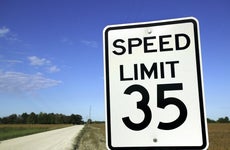Car insurance after a hit-and-run in Missouri

The Bankrate promise
At Bankrate, we strive to help you make smarter financial decisions. To help readers understand how insurance affects their finances, we have licensed insurance professionals on staff who have spent a combined 47 years in the auto, home and life insurance industries. While we adhere to strict , this post may contain references to products from our partners. Here's an explanation of . Our content is backed by Coverage.com, LLC, a licensed entity (NPN: 19966249). For more information, please see our .
Hit-and-runs in Missouri
In Missouri, a hit-and-run is legally defined as being knowingly involved in an accident with another vehicle or vehicles and then failing to stop and provide the necessary information to the other involved parties or law enforcement. Unfortunately, such incidents are common in Missouri as well as across the United States.
According to recent available findings, the frequency of hit-and-run accidents and the resulting fatalities are increasing alarmingly. In 2015, there were approximately 737,100 hit-and-run crashes, equating to a hit-and-run occurring every 43 seconds. More concerning, 2016 saw the highest number of fatalities from these incidents, with 2,049 deaths recorded.
These incidents highlight the significance of being adequately insured. Knowing how Missouri hit-and-run laws work and ensuring your auto insurance policy includes the right coverage may help provide crucial financial safeguarding if you’re ever impacted by such an incident.
Missouri hit-and-run laws
The driver responsible for a hit-and-run in Missouri is liable for the other driver’s vehicle damage, as well as for the medical expenses for the driver and any passengers injured. Missouri hit-and-run laws state that a driver who causes a hit-and-run that results only in property damage could be charged with a misdemeanor. However, if the accident results in bodily injury or fatalities, the driver may be fined up to $5,000 and may spend up to four years in prison.
Hit-and-run laws in Missouri
Missouri laws state that a hit-and-run conviction may be classified as a level A misdemeanor or a level E or D felony charge if you cause bodily injury, damage to physical property over $1,000 or a death. A class E felony can be punishable by up to four years in jail and a fine of $5,000.
The penalties for a hit-and-run in Missouri vary based on the severity of the incident. A driver could be charged with 6 points on their driver’s license if a local or county law enforcer issued the ticket. On the contrary, a ticket from a Missouri State Highway Patrol officer could lead to 12 points. Accumulating 12 points within a year could result in a year-long license suspension. Furthermore, the offense can’t be expunged from your driving record if issued by a Highway Patrol officer.
How does a hit-and-run affect car insurance in Missouri?
Being involved in an at-fault accident, including a hit-and-run, is likely to result in an increase in your car insurance rates in Missouri. The average cost of full coverage car insurance in the state is $2,517 per year. However, following a standard at-fault accident, the rate is $3,258 — a 29 percent increase.
While specific car insurance rates for hit-and-run Missouri incidents are not readily available, you should understand that a hit-and-run in Missouri will typically cause steeper insurance hikers than a standard at-fault accident, given the serious nature of such incidents. This can make finding cheap car insurance a challenge in the future.
Additionally, drivers facing license suspension after a hit-and-run may need to obtain an SR-22 form, a requirement that not all insurers accommodate. This might necessitate switching to an insurer that offers SR-22 filings, especially for drivers categorized as high-risk.
What to do after a hit-and-run in Missouri
In the unfortunate event that you find yourself a victim of a hit-and-run in Missouri, understanding the correct steps to take is vital. It can feel overwhelming, but knowing what to do can help ensure your safety and protect your rights. Here’s a straightforward guide:
- Ensure Safety: Your immediate priority should be your safety and the safety of others in the vicinity. If your vehicle is posing a hazard, move it to a safe location if possible. Otherwise, leave it as is until instructed otherwise by law enforcement.
- Assist Injured Individuals: If there are any injuries, offer assistance until medical help arrives.
- Contact Law Enforcement: It’s important to call the police as soon as possible. A formal police report will be crucial for your insurance claim and any subsequent legal proceedings.
- Exchange Information: If there are other involved parties, Missouri law requires you to exchange the following information: name, address, vehicle plate number or registration and driver’s license number.
- Report to the Driver License Bureau: If the hit-and-run accident resulted in property damage over $500, injury, death, or involved an uninsured motorist, and occurred less than a year ago, report it to the Driver License Bureau. You can obtain a Motor Vehicle Accident Report form from their website, your insurance company or any license office. Fill it out and mail it to them.
- Contact your car insurance company: Once it is safe to do so, contact your insurance company to file a claim. In most cases, a claim can be filed over the phone, online or through your carrier’s mobile app.
Frequently asked questions
-
In the state of Missouri, your uninsured motorist coverage might be able to cover the injuries of you and your passengers up to the limit of your policy if the at-fault driver is either unidentifiable or uninsured. If you have collision coverage on your policy, it may take care of the damage sustained by your vehicle, but you are still responsible for the deductible. However, a policy with liability-only coverage will not extend to coverage on your vehicle in these circumstances.
-
The average cost of full coverage car insurance in Missouri is $2,517 per year, and minimal coverage is $653 per year. Keep in mind that these are average rate quotes, and your actual car insurance rate will be higher or lower based on your unique driving profile.
-
No, Missouri is not a no-fault car accident state. In Missouri, the driver who is found to be at fault for an accident is responsible for paying for the damage. This is why it’s crucial to report a hit-and-run immediately and provide as much information as possible to aid the police in their investigation.
Methodology
Bankrate utilizes Quadrant Information Services to analyze April 2024 rates for all ZIP codes and carriers in all 50 states and Washington, D.C. Rates are weighted based on the population density in each geographic region. Quoted rates are based on a single, 40-year-old male and female driver with a clean driving record, good credit and the following full coverage limits:
- $100,000 bodily injury liability per person
- $300,000 bodily injury liability per accident
- $50,000 property damage liability per accident
- $100,000 uninsured motorist bodily injury per person
- $300,000 uninsured motorist bodily injury per accident
- $500 collision deductible
- $500 comprehensive deductible
To determine minimum coverage limits, Bankrate used minimum coverage that meets each state’s requirements. Our base profile drivers own a 2022 Toyota Camry, commute five days a week and drive 12,000 miles annually.
These are sample rates and should only be used for comparative purposes.
Incidents: Rates were calculated by evaluating our base profile with the following incidents applied: clean record (base), at-fault accident, single speeding ticket, single DUI conviction and lapse in coverage.
Related Articles



